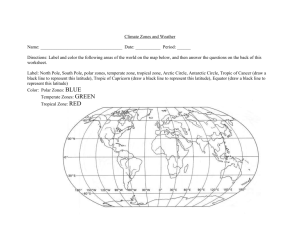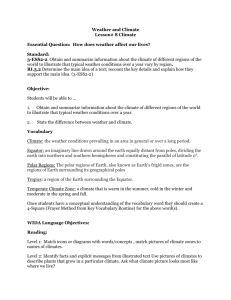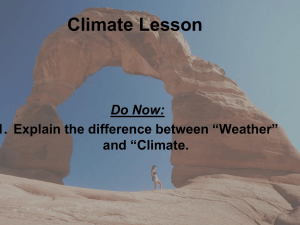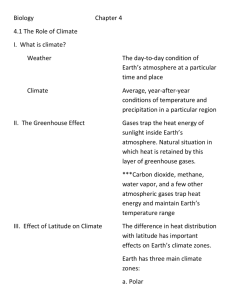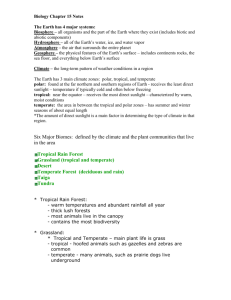Climate Zones
advertisement
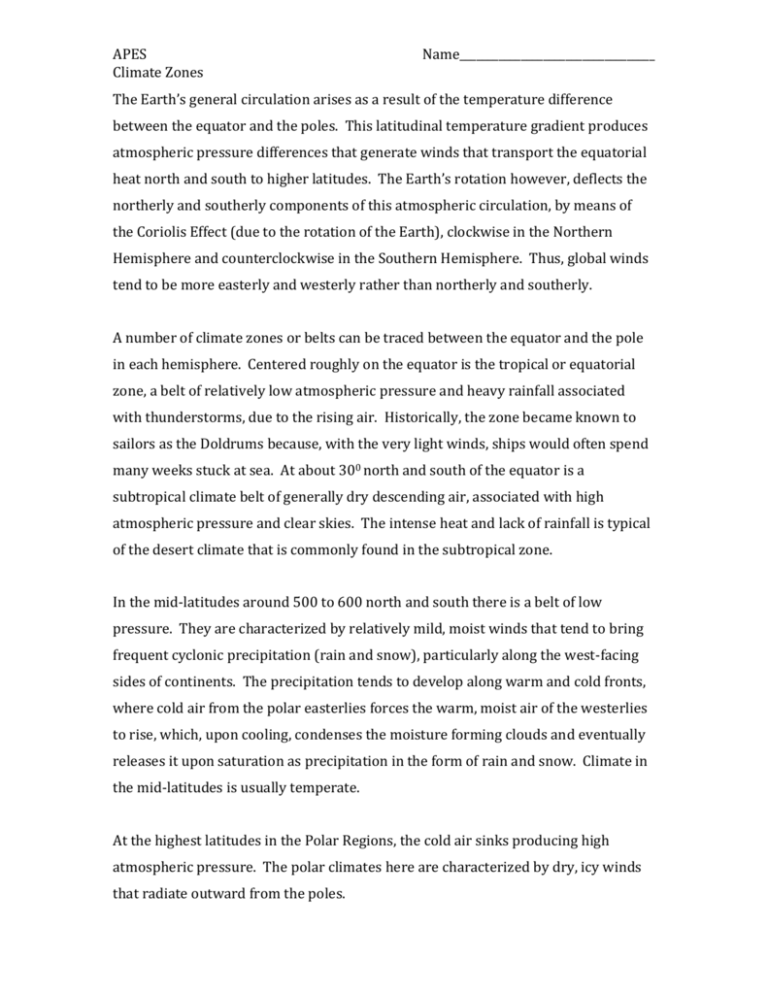
APES Climate Zones Name___________________________________ The Earth’s general circulation arises as a result of the temperature difference between the equator and the poles. This latitudinal temperature gradient produces atmospheric pressure differences that generate winds that transport the equatorial heat north and south to higher latitudes. The Earth’s rotation however, deflects the northerly and southerly components of this atmospheric circulation, by means of the Coriolis Effect (due to the rotation of the Earth), clockwise in the Northern Hemisphere and counterclockwise in the Southern Hemisphere. Thus, global winds tend to be more easterly and westerly rather than northerly and southerly. A number of climate zones or belts can be traced between the equator and the pole in each hemisphere. Centered roughly on the equator is the tropical or equatorial zone, a belt of relatively low atmospheric pressure and heavy rainfall associated with thunderstorms, due to the rising air. Historically, the zone became known to sailors as the Doldrums because, with the very light winds, ships would often spend many weeks stuck at sea. At about 300 north and south of the equator is a subtropical climate belt of generally dry descending air, associated with high atmospheric pressure and clear skies. The intense heat and lack of rainfall is typical of the desert climate that is commonly found in the subtropical zone. In the mid-latitudes around 500 to 600 north and south there is a belt of low pressure. They are characterized by relatively mild, moist winds that tend to bring frequent cyclonic precipitation (rain and snow), particularly along the west-facing sides of continents. The precipitation tends to develop along warm and cold fronts, where cold air from the polar easterlies forces the warm, moist air of the westerlies to rise, which, upon cooling, condenses the moisture forming clouds and eventually releases it upon saturation as precipitation in the form of rain and snow. Climate in the mid-latitudes is usually temperate. At the highest latitudes in the Polar Regions, the cold air sinks producing high atmospheric pressure. The polar climates here are characterized by dry, icy winds that radiate outward from the poles. APES Climate Zones Name___________________________________ Climate Guiding Questions Tropical 1. Where can the tropical climate zones be found? 2. Describe the climate that the tropical zones experience. 3. What affects the weather within a tropical climate zone? 4. What Biomes can be found in the tropics? Temperate 5. Where can the temperate climate zones be found? 6. Describe the climate that the temperate zones experience. 7. What affects the weather within a temperate climate zone? 8. What Biomes can be found in the temperate zones? Polar 9. Where can the polar climate be found? 10. Describe the climate that the temperate zones experience. 11. What affects the weather within a polar climate zone? 12. What Biomes can be found in the polar zones?

